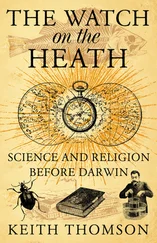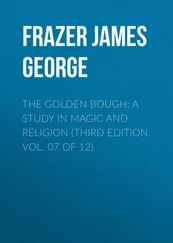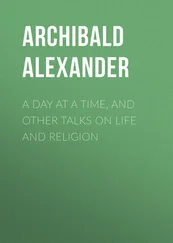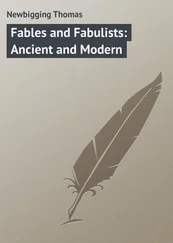Vikernes, Varg - Varg Vikernes - Sorcery and Religion in Ancient Scandinavia
Здесь есть возможность читать онлайн «Vikernes, Varg - Varg Vikernes - Sorcery and Religion in Ancient Scandinavia» весь текст электронной книги совершенно бесплатно (целиком полную версию без сокращений). В некоторых случаях можно слушать аудио, скачать через торрент в формате fb2 и присутствует краткое содержание. Жанр: Старинная литература, на английском языке. Описание произведения, (предисловие) а так же отзывы посетителей доступны на портале библиотеки ЛибКат.
- Название:Varg Vikernes - Sorcery and Religion in Ancient Scandinavia
- Автор:
- Жанр:
- Год:неизвестен
- ISBN:нет данных
- Рейтинг книги:3 / 5. Голосов: 1
-
Избранное:Добавить в избранное
- Отзывы:
-
Ваша оценка:
- 60
- 1
- 2
- 3
- 4
- 5
Varg Vikernes - Sorcery and Religion in Ancient Scandinavia: краткое содержание, описание и аннотация
Предлагаем к чтению аннотацию, описание, краткое содержание или предисловие (зависит от того, что написал сам автор книги «Varg Vikernes - Sorcery and Religion in Ancient Scandinavia»). Если вы не нашли необходимую информацию о книге — напишите в комментариях, мы постараемся отыскать её.
Varg Vikernes - Sorcery and Religion in Ancient Scandinavia — читать онлайн бесплатно полную книгу (весь текст) целиком
Ниже представлен текст книги, разбитый по страницам. Система сохранения места последней прочитанной страницы, позволяет с удобством читать онлайн бесплатно книгу «Varg Vikernes - Sorcery and Religion in Ancient Scandinavia», без необходимости каждый раз заново искать на чём Вы остановились. Поставьте закладку, и сможете в любой момент перейти на страницу, на которой закончили чтение.
Интервал:
Закладка:
This verse is linked to Kauna and Svartr. The god said the key words he had to know to receive education from the sorceress in the grave, and showed her the mistletoe; this was the key he needed to be allowed to take the valuables with him from the grave mound when he left. He learned how to make predictions for the future year (for every “house”, “world”, i. e. every month of the year).
30
She saw those who choose the fallen/chosen
come from far away,
ready to ride
to the divine folk;
guilt held shield,
thrust the other,
strife, battle, stave bearer
and spear thrust.
Now they are all counted,
the fearless women of the ravagers,
ready to ride the ground
like choosers of the fallen/chosen.
This verse is connected to Kauna and Gebo , Svartr and Heimdallr. The goddesses equipped the gods with weapons and shields, from the grave, and made them ready to fight and kill Höðr in the religious bear and wolf hunt, starting the first day of the new year.
31
I saw Baldr,
the blood stained and glorious god,
child of Óðinn,
persecuted by fate;
a stave grew up
on the old plain,
thin and very beautiful,
mistletoe.
This verse is linked to Kauna and Gebo , Svartr and Heimdallr. In the tomb the god found the body of the god Baldr, and gave him the mistletoe so that he would get his strength back, grow up again and come back from the dead.
32
This tree,
that seemed so innocent,
was turned into a dangerous missile,
cast by Höðr;
Baldr's brother was
born on that day,
he took Óðinn's son (here Höðr) and killed him
one night old.
This verse is connected to Gebo and Heimdallr. The mistletoe, which looks quite innocent, was used to kill Baldr, when Höðr removed it from the oak tree. The god visiting the grave mound left the mound as Váli, Baldr's brother and avenger, who started the hunt for Höðr and killed him just one night old. The religious bear and wolf hunt had begun.
33
He did not rest his hands,
he did not comb his hair,
until he could carry
Baldr's enemy on the funeral pyre;
but Frigg wept
in the hall with a fence around it,
over Valhall's bad luck.
Do you still know enough or what?
This verse is connected to Wina and Fjörgyn. While the berserks were hunting restlessly for bears and wolves in the forest the goddess sat and wept in the burial mound.
4.6 Hagall's second Group of eight
34
Then the fallen/chosen binds knots
changes the sacred gods,
we become harder
of life in that time.
This verse is connected to Hagalaz and Ægir. The gods who hunted down and killed the bear and the wolf were changed, they became harder and tougher, because they took the animals' life force and made it their own. Thus they became unbeatable and immortal in battle. They became berserks.
35
She saw hard life
under each grove,
the treacherous body,
looking like Loki;
there she who sinks down sits
not satisfied with her house.
Do you still know enough or what?
This verse is connected to Nauþi and the Norns. Höðr/Fenrir, wolf and son of Loki, was killed by the hunters and sent to Hel (the grave mound), where they slaughtered him. The woman who sunk down was the woman imitating the death goddess. She was not happy about staying for such a long time in the grave mound, where not only the dead lay, but also where the men skinned dead animals, drank blood, ate animal hearts and where the remains were tied and fastened in the grave mound with animal entrails.
36
A river falls from the east
through poison valleys
saxes and swords,
it is called terrible (sword) scabbard.
37
Stood north of
the plain below
a hall of gold
for the kin of the sparks;
another stood
where it never gets cold,
the hall of hunger,
which they call the sea/fire.
This verse is connected to Isaz (36) and Hel, and Jera (37) and Freyja. The river that fell from the east was the rain and snow that came from the sky instead of the Sunshine; deadly ice hurting the face like a sword. The plain below was the grave and the realm of the dead. In the far north the Sun rested in the grave – and it was then a hall of gold, lit up by the Sun itself. It rose in the east, shone in the south, went down in the west and at night it slept in the grave in the north. An alternative Sun had therefore been lit in the home, by the sorcerers/gods (Freyja and her husband), in the fire, where it was never cold. Embers and the fire kept mankind warm through the winter.
38
She saw a hall standing
far away from the Sun
on the beach of corpses,
the door opened to the north;
poison dripped
in through the roof,
this is the room given to
those with a worm backbone.
This verse is connected to Isaz and Jera , Hel and Freyja. Far from the Sun lay the burial mound, inside the Earth where the Sun could not light up (other than on the Winter Solstice), where the cold rain was dripping through the roof and down unto the dead, There were only skeletons left in the burial mounds; those with a backbone looking like a worm.
39
There, she saw wading
in strong currents
the men who
gave false testimony
and outlawed murderers (wolf murderers),
who told whispering secrets
there fell a blow from below (Höðr)
and had great success on the corpses,
enjoyed tearing in outlaws (wolves).
Do you still know enough or what?
This verse is connected to Perþi and Íwaz , Váli and Sleipnir and Skaði. She saw the men who in secret hid the gifts they had found in the burial mounds for later use (and thus gave false testimony), and she saw the outlawed berserks (bear/wolf) they hunted. These animals were the winter spirits who had murdered Baldr and kidnapped his wife. They travelled through the autumn darkness and rain. Out there in the forest Höðr (the bears and wolves) fell to rest, in the end, and the gods drank their blood, ate their hearts and took their skins. They “made progress on the corpses”, when they took their life-force, by "tearing" their corpses, and they became berserks.
40
In the east the old sat
in iron forests
and gave birth to
the children of the walled in rider (Höðr/Fenrir);
was of them all
most skilled stealer
and destroyer of celestial bodies,
in form of harmful spirits (trolls).
This verse is connected to Algiz and Víðarr . In the east, the old one sat in the forest where the battle of Ragnarök took place, where iron weapons were used (“the forest of iron-tipped spears”). The old was the goddess of death who gave birth to Váli, the sorcerer/god who became a berserk; those who representing Fenrir (Höðr) at Ragnarök. The sorcerers were skilled warriors, who at the Autumn Equinox stole the mistletoe from the oak tree, and thus destroyed (the power of) the Sun. They dressed in women's clothing and wore big hats to mimic the hermaphroditic spirits of nature. When the sorcerers stole the mistletoe from the sacred trees they were seen as harmful spirits, and were therefore called trolls (“harmful spirits”).
41
It filled up with blood
from those who will soon die
from the flock of the rusty power,
blood runs red;
the sunshine was black
in the summer after
the weather was unreliable.
Do you still know enough or what?
This verse is connected to Sowili and Sól. The battle was fought, between the elves and shadows, gods and berserks. The gods killed those who had risen from the graves, the winter spirits, who had been killed during the hunt for Höðr. Because iron rusted in the grave they were called “the flock of the rusty power”. Elves, the dead, all of whom were sent back to Hel, did not see the Sunshine the following summer, and could not know what kind of weather they would receive in the coming year. It took at least nine months before they could be reborn again, after a woman had gone to the grave and transferred them to her stomach.
Читать дальшеИнтервал:
Закладка:
Похожие книги на «Varg Vikernes - Sorcery and Religion in Ancient Scandinavia»
Представляем Вашему вниманию похожие книги на «Varg Vikernes - Sorcery and Religion in Ancient Scandinavia» списком для выбора. Мы отобрали схожую по названию и смыслу литературу в надежде предоставить читателям больше вариантов отыскать новые, интересные, ещё непрочитанные произведения.
Обсуждение, отзывы о книге «Varg Vikernes - Sorcery and Religion in Ancient Scandinavia» и просто собственные мнения читателей. Оставьте ваши комментарии, напишите, что Вы думаете о произведении, его смысле или главных героях. Укажите что конкретно понравилось, а что нет, и почему Вы так считаете.












